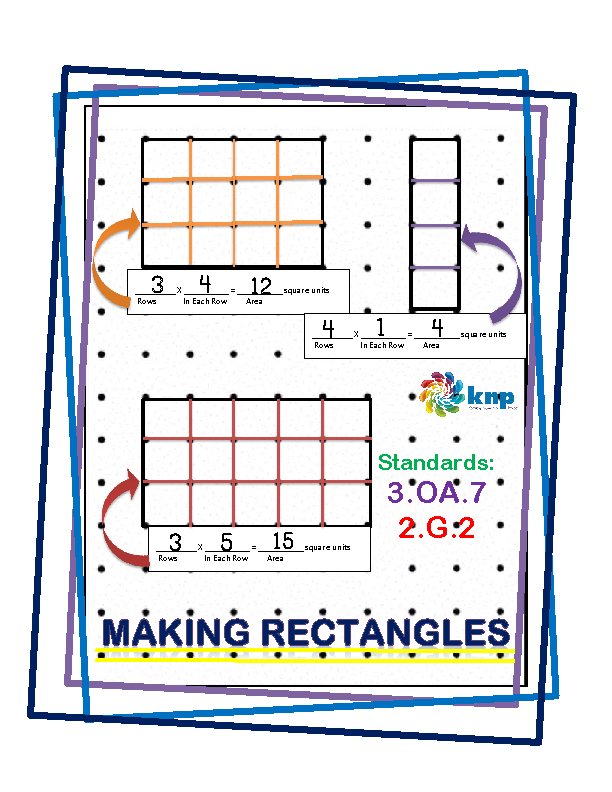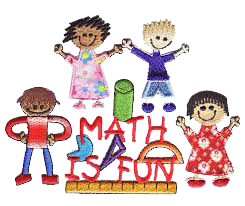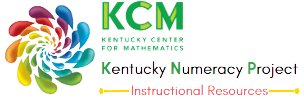“Making Rectangles”
KNPIG ID #M 4405.2
What's this activity about?
This activity asks your child to connect the dots with horizontal and vertical lines to find the number of squares that will fit in given rectangle. Once they make lines to create the blocks they can count the total number of blocks they have created. The number of rows of blocks and the number of blocks in each row can be multiplied together to give the total number of blocks in the rectangle. They will then write the multiplication sentence to match the rectangle model giving them the area of the rectangle.
What materials do we need?
Connect the dots page Pencils, markers and/or crayons

How do we play?
Get the Connect the Dots Page and something to write with. Your child will connect the dots using markers or crayons to find the number of squares that will fit in each rectangle. They then will write the matching multiplication sentence in the spaces provided below the rectangle.
Where’s the Math?
This activity relates to a lot of what your child in learning in school. Your child is learning how to multiply single digit numbers. They are also learning how rectangles relate to multiplication facts. When trying to recall multiplication facts, your child will be able to use this skill to help visualize solutions. Reasoning with shapes and their properties is an essential skill to have mastered by the end of third grade.
Things to Think About:
As you use this activity with kids, remember BE PATIENT. Giving children time to think will help them develop more critical thinking skills and deeper understanding. Research shows if children visualize what is happening to quantities and how they change, later on their basic math facts will be easier to learn and memorize. By guiding them through the basics of the activity, they will naturally start seeing the relationship between rectangles and multiplication facts.
Writing the multiplication problems may be the most difficult part of this activity. Knowing what the labels “Rows” and “In each Row” are referring to is the first step into making this a successful activity. The “Rows” refers to how many blocks tall the rectangle ends up being. “In Each Row” is how many blocks long the rectangle will end up being. Kids may recognize this pattern of drawing multiplication problems as making arrays. When they multiply these two numbers together, they get the “Area” or total number of blocks in the rectangle. This is a great introduction to area, or how much space something takes up in two directions. The multiplication skills they are learning through this activity will carry over later, when they start working with geometry. You can show them how they can easily find the area of a space by using multiplication skills they already know.
You can talk about how this skill could be applied to the real world. You may want to encourage them by talking about planting a garden, building a basketball court or planning how furniture can be placed in their room. Kids respond well to things they are familiar with and it will improve their excitement and engagement.
Feedback
Send us your thoughts and ideas about these activities. Email the KCM

